|
|
HEALTHY HAPPENINGS - February 2024
|
Cholesterol is Bad for You
by Ray Andrew, MD
|
Everyone knows this. It’s been ingrained in our minds for the last 50 years. We are supposed to eat a low-fat, low-cholesterol diet. Experts advise that all adults should be taking cholesterol-lowering drugs to reduce our risk of heart attack and stroke. Doctors are even starting to have concern about infants and children with high cholesterol. People found to have heart attacks, already taking cholesterol-lowering drugs, are prescribed higher doses of those drugs to drive cholesterol even lower with the hope of preventing additional heart attacks.
As a young doctor, I was the drug reps’ poster boy, proudly driving every patient’s cholesterol into the ground with the miracle drugs…until I actually started learning about cholesterol. This essential molecule is born in the liver, which makes far more cholesterol every day than we can possibly eat. Moreover, the body makes more cholesterol in the presence of inflammation, infections, and toxins. Because these problems are so widespread in modern American society, we should not be surprised that there is an epidemic of elevated cholesterol.
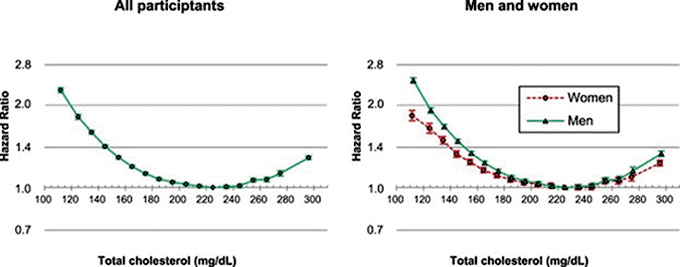
Concern about cholesterol began many decades ago, when researchers discovered that people with heart attacks and strokes had plaques in the walls of their arteries. The largest component of those plaques was cholesterol. But is cholesterol really that bad? Is it the cause of the plaques? Is the cholesterol in the plaque the cause of heart attacks? Is the amount of cholesterol circulating in the bloodstream the cause of the plaques?
It turns out that cholesterol is not the villain it’s been made out to be. Suppose you are a reporter in a major city, and your job is to cover traffic accidents. Before long, you notice that every time there is an accident, you see an ambulance on the scene. Being intelligent, you wouldn’t conclude that ambulances cause motor vehicle accidents. They are actually called to the scene to help save life and limb. You wouldn’t call for a ban on ambulances merely because you happen to find them at the scene of every crash. Yet this is what we do with cholesterol.
Why is this a mistake? First of all, God gave us cholesterol for a number of reasons. All steroid hormones are made from it. If we don’t have enough cholesterol, we can’t make testosterone, estradiol, progesterone, DHEA, cortisol, vitamin D, and the rest of the steroid hormones. But wait: I thought those hormones were bad for you? Cortisol causes weight gain, suppresses your immune system, raises blood sugar, etc. Actually, the truth is that without cortisol, you will die within three days. If you have some but not enough, you’ll be tired, have poor stress resilience, and be unable to fight infections.
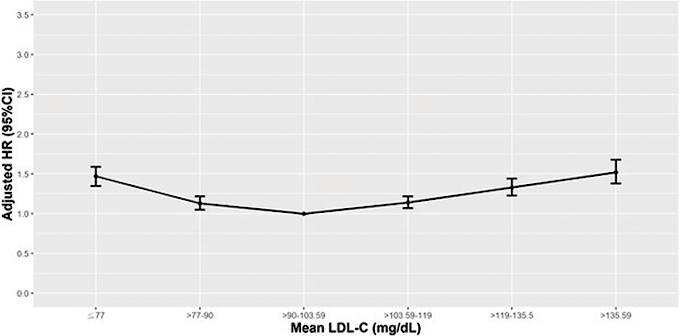
Let’s look at another hormone made from cholesterol: Testosterone. We are told it is bad because it causes prostate cancer…except that it doesn’t. We are told estrogen is bad because it causes breast cancer…except that it doesn’t. Cholesterol is bad because it causes heart disease…except that it doesn’t! Lately, everything God gave us seems to have been demonized while manmade chemicals have been lauded as the solution to all health problems. Hmmm.
Why else do we need cholesterol? Well, guess what the membrane of every cell in your body is made of? Cholesterol. You don’t have cholesterol, you don’t make healthy cells.
Secondly, lowering cholesterol doesn’t save lives. It’s ironic but sad that doctors are taught to prescribe higher doses of cholesterol-lowering drugs whenever a person has a heart attack, even when the cholesterol is already low. If you have a heart attack with low cholesterol, it does not make sense that lowering it even further is going to prevent your next heart attack. Why not perform a comprehensive evaluation to identify the real reasons the artery got blocked? Why not look for the causes of the inflammation that led the liver to make more cholesterol? And what is cholesterol doing in the arteries anyway, if not simply clogging them to kill us?
It turns out that infections, inflammatory diseases, and toxins—yes, that includes refined sugar, trans fats, pesticides, and much more—damage blood vessel walls. The body responds to this by sending cholesterol to patch up the injuries. Cholesterol can accumulate in the blood vessel wall, obstructing blood flow. Worse, when a plaque ruptures, platelets accumulate to patch up the “hole” in the blood vessel lining, creating a clot. This clot can either block the blood vessel right there, or break off and get stuck farther downstream. In either case, tissues in the heart, brain, or elsewhere downstream become deprived of oxygen and die.
In light of all these facts, what should your cholesterol be? Laboratories have long classified 200mg/dL as the limit above which total cholesterol becomes dangerous. Hmmm. What is that based on? Someone came up with that magic number, but it wasn’t based on studies of real people, which is the only thing that counts. In a study* of 12.8 million adults completed in 2013, it was found that those with the lowest risk of death actually had total cholesterol levels between 200 and 240mg/dL.
Ok, so that’s total cholesterol. But what about the “bad” cholesterol we are all taught needs to be pushed as low as possible to save our lives? A study† concluded in 2018 answers this question, at least for people with diabetes:
With this in mind, if your doctor congratulates you for having a total cholesterol below 200 or an LDL cholesterol below 90 and tells you the drug is working and to keep taking it, beware that this is not a cause for celebration. Rather, it’s a cause for concern: You have just increased your overall risk of death. Cholesterol—even LDL cholesterol—is not your enemy, any more than all the hormones made from cholesterol are your enemies. God knew what He was doing when He gave it to you. You don’t exist without it.
Of course, as you can see, too much cholesterol is not a good thing, either. But this does not mean you need a drug to lower it. That’s like putting a piece of electrical tape over a warning light on the dashboard of your car. When your cholesterol rises above 240, it’s just an indicator that your liver is responding to inflammation, infections, or toxins. You can get a pat on the back from your doctor by suppressing your liver’s production of cholesterol with a drug. But your body doesn’t celebrate the artificial lowering of a number on a piece of paper with the same excitement that your doctor does. Artificially suppressing natural processes always comes at a price. In the case of cholesterol-lowering drugs, it is no secret that they increase risk of heart failure, diabetes, dementia, depression, testosterone deficiency, muscle damage, liver damage, and other undesirable health consequences. These are all well-documented in scientific studies. Worse, recent research has found these drugs to reduce vitamin K2, leading to hardening of the arteries in the heart, exactly what the drugs were supposed to prevent!
So what can you do to lower unhealthily high cholesterol? The answer is pretty simple, although not as easy as taking a magic pill: Identify and eliminate the triggers that cause your body to make excessive cholesterol. You can start by eliminating refined sugar and processed foods. If your cholesterol fails to normalize with dietary changes, you will need to look for and address additional factors. Unfortunately, American medical schools don’t teach doctors about inflammatory triggers. There is a good reason for this: There is no patented drug to treat them. For this reason, you will need the assistance of a functional medicine-trained doctor if you want to get to the bottom of your cholesterol problem. If you are ready to address the real problem instead of continuing to cover up the warning light on your dashboard, call Prestige Wellness Institute at (435) 210-0184 to schedule a consultation. But don’t be surprised when you start feeling and functioning better, too.
*"Total cholesterol and all-cause mortality by sex and age: a prospective cohort study among 12.8 million adults", Scientific Reports, 2019; 9: 1596.
†"The relationship of low-density lipoprotein cholesterol and all-cause or cardiovascular mortality in patients with type 2 diabetes: a retrospective study", Peer J. 2023; 11: e14609.
|
A Guide to a Healthy Heart:
Proactive Steps for Cardiovascular Wellness
by Hospital Staff
|
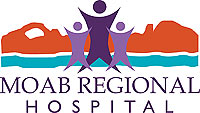 Cardiovascular diseases (CVDs) pose a significant global health threat, claiming around 17.9 million lives annually. These diseases impact the heart and blood vessels, leading to conditions like heart attacks and strokes. While CVDs are a leading cause of death worldwide, the good news is that there are practical steps you can take now to safeguard your heart and enhance your overall well-being. Cardiovascular diseases (CVDs) pose a significant global health threat, claiming around 17.9 million lives annually. These diseases impact the heart and blood vessels, leading to conditions like heart attacks and strokes. While CVDs are a leading cause of death worldwide, the good news is that there are practical steps you can take now to safeguard your heart and enhance your overall well-being.
Understanding Cardiovascular Diseases:
CVDs cover various disorders, including coronary artery disease, heart failure, valvular heart diseases, and more. Risk factors include high blood pressure, high cholesterol, smoking, obesity, diabetes, and a sedentary lifestyle. Genetics also play a role, emphasizing the need for proactive management of controllable risk factors.
Preventive Measures for a Healthy Heart:
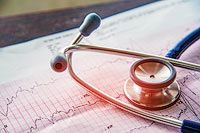
1. Adopt a Heart-Healthy Diet:
• Choose a diet rich in fruits, vegetables, whole grains, lean proteins, and low-fat dairy.
• Limit saturated and trans fats, sodium, and added sugars.
• Consider the Mediterranean or DASH diet for optimal heart health.
2. Regular Physical Activity:
• Aim for at least 150 minutes of moderate-intensity aerobic exercise or 75 minutes of vigorous exercise weekly.
• Include strength training exercises at least twice a week.
• Make exercise enjoyable to sustain it in your routine.
3. Maintain a Healthy Weight:
• Achieve and sustain a healthy weight for your height and build.
 • Focus on gradual, sustainable weight loss through a balanced diet and regular exercise. • Focus on gradual, sustainable weight loss through a balanced diet and regular exercise.
4. Quit Smoking:
• Seek support to quit smoking, a major risk factor for CVDs.
• Avoid exposure to secondhand smoke.
5. Manage Stress:
• Practice stress-reducing techniques like meditation, deep breathing, yoga, or nature activities.
• Prioritize self-care and healthy stress coping mechanisms.
6. Regular Health Check-ups:
• Monitor and manage blood pressure, cholesterol, and blood sugar.
• Collaborate with healthcare providers for a personalized cardiovascular health plan.
Taking charge of your heart health is an investment in your overall well-being. By embracing a heart-healthy lifestyle, including a nutritious diet, regular exercise, maintaining a healthy weight, quitting smoking, managing stress, and staying on top of health check-ups, you can significantly reduce the risk of cardiovascular diseases. Remember, consistent, small changes can lead to a substantial difference in promoting a long and healthy life.
Moab Regional Hospital welcomes Dr. Maureen A. Maher, a cardiologist from Intermountain Health Heart & Vascular—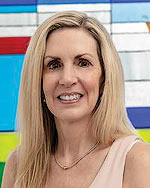 West Park Cardiology in Grand Junction, who is now visiting Moab once a month.
Dr. Maher, a board-certified cardiologist with a focus on noninvasive cardiology, earned her undergraduate degree from the College of the Holy Cross and her Doctor of Medicine from the University of Massachusetts – Worcester. She completed her internship, residency, and Cardiovascular Disease Fellowship at the University of Massachusetts Medical Center. West Park Cardiology in Grand Junction, who is now visiting Moab once a month.
Dr. Maher, a board-certified cardiologist with a focus on noninvasive cardiology, earned her undergraduate degree from the College of the Holy Cross and her Doctor of Medicine from the University of Massachusetts – Worcester. She completed her internship, residency, and Cardiovascular Disease Fellowship at the University of Massachusetts Medical Center.
Taking a personalized approach to patient care, Dr. Maher looks at each individual holistically, aiming to understand all aspects of their lives beyond heart disease. This allows her to provide customized care and achieve improved outcomes. Driven by a passion for empowering patients, she emphasizes education and understanding of their disease processes.
Beyond her medical practice, Dr. Maher, a mother of five, enjoys skiing, hiking, power walking, beach outings, traveling, family time, and shopping excursions with her daughter. To schedule a visit with Dr. Maher, please call 970-298-3050.
|
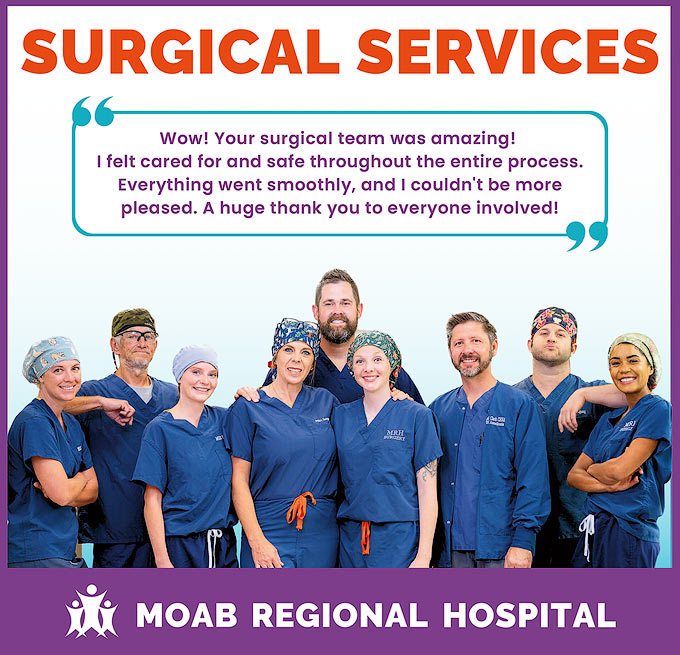
Free Community Lunch
Thursdays from 11:30am to 1:00pm at the St. Francis Episcopal Church (250 Kane Creek Boulevard, Moab). Free lunches for all who come by. Homemade soups (always several choices) or sandwiches, bread (chips with sandwiches), dessert, coffee and water. Call St. Francis Episcopal Church at 435 259-5831 for information.
Free Community Food Pantry
Fridays from 4-6pm at the St. Francis Episcopal Church (250 Kane Creek Boulevard, Moab) No ID, no name, no address, no personal information needed. We always have canned goods, bagged goods, meat. We often have bread, fresh produce, milk, cheese, fruit juice, eggs. Also personal toiletries, cleaning supplies, diapers, dog food. Feel free to pick up for someone who can't get out, or someone who is working. Call St. Francis Episcopal Church at 435 259-5831 for information.
Moab Valley Multicultural Center Food Pantry
Clients may access the Food Pantry once every two weeks. Schedule:
Mon Wed Thu: 9am-12pm, 1-5pm
Tue: 9am-12pm, 2:30-5pm
Fri: 9am-12pm
LUNCH at the Grand Center,
182 N. 500 W. Noon on Mon, Tues, Wed & Fri under 60: $6.00 over 60: $2.50 suggested donation
Moab Community Health Talks - Our Village Community Center hosts Dr. Don Leathers, naturopathic physician, and Sarah Cook, massage therapist health coach & lay homeopath in an informal round table discussion meant for community members to have their questions answered in a supportive space. Second Wednesday of each month. 1-2pm at Our Village Community Center, 721 N 500 W, Moab. Suggested donation of $5-$20. Info: ourvillage.org, phoenixrisingmoab.com, sarahcookmassage.com or 435-260-0294 or 435-259-8123
Moab Community Yoga
Tuesdays 6:30-7:30pm at the Moab Arts and Recreation Center (MARC) in the dance room. 111 E 100 N
Gyrokinesis® Class w/ Anne Howe
The Gyrokinesis® Method is a movement method that addresses the entire body, opening energy pathways, stimulating the nervous system, increasing range of motion and creating functional strength through rhythmic, flowing movement sequences. It is an original and unique method that coordinates movement, breath and mental focus. Thursdays 5:30-6:30pm. Sundari Yoga & Wellness Studio 1105 S US-191 #3 www.sundariyogamoab.com
Sheng Zhen Meditation - Thursdays 5:30-7pm at Moab Arts and Recreation Center. Other classes available and info at shengzhenmoab.com/
Community Reiki (Alternating Tuesdays, 9am & 3pm)
Join Crystal at Mindful Movement Moab, 76 S Main St Suite 15, for a free 30 minute community Reiki Session. Must be a local resident for the session. Sign up online at www.mindfulmovementmoab.com
Yoga in the Park (Wednesdays, Swanny Park, 5pm)
Join Breann with Wellness Collective for a 60 minute yoga session brought to the community by a partnership with USARA. Mats are provided and the class is open to everyone in the community. Yoga is free. At Swanny Park. Sign up for class online at www.wellnesscollectivemoab.com
Yoga in the Park (Thursdays, Swanny Park, 8am)
Join Crystal with Wellness Collective for a 45 minute yoga session brought to the community by a partnership with USARA. Mats are provided and the class is open to everyone in the community. Yoga is free and you can sign up for class online at www.wellnesscollectivemoab.com
Virtual Mindfulness Class (Thursdays, 6pm)
Join the facilitators with Wellness Collective for a 30 minute mindfulness session brought to the community by a partnership with USARA. Class is free and you can sign up online to receive the zoom link.
www.wellnesscollectivemoab.com
Virtual Trauma Sensitive Yoga (Mondays, 6pm) Trauma Sensitive Yoga focuses on the use of yoga movements as an opportunity to practice making choices with our bodies and to possibly notice what we feel in our bodies. Class is free and you can sign up online to receive the zoom link. www.wellnesscollectivemoab.com
|
|
|
|
|
|
|
|
|
© 2002-2024 Moab Happenings. All rights
reserved.
Reproduction of information contained in this site is
expressly prohibited.
|
|